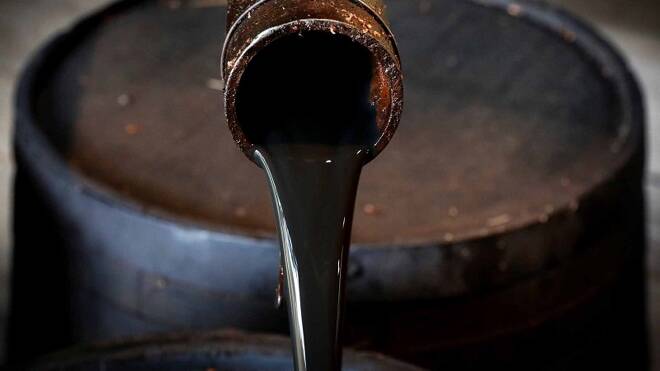Advertisement
Advertisement
Oil Price Fundamental Weekly Forecast – Short-Term Bullish as Traders Await Timetable for Repairs to Saudi Facilities
By:
Keep in mind that Saudi Arabia has yet to comment on the extent of damage on its oil production although Saudi Aramco President and CEO Amin Nasser said, “Work is underway to restore production and a progress update will be provided in around 48 hours.”
U.S. West Texas International and international-benchmark Brent crude oil futures are expected to open sharply higher on Sunday after a series of drone attacks hit a Saudi oil field and processing facility. The drone strikes are believed to have disrupted half the country’s production capacity, leading to the forecast for a $5 to $10 higher opening in the futures market.
Last week, December Brent crude oil settled at $59.25, down $1.32 or -2.23% and November WTI crude oil settled at $54.80, down $1.63 or -2.89%.
This news will shift the focus back to the supply side after most of the bearish action last week was fueled by demand concerns. Last week, oil prices were pressured by concern about a weaker demand outlook that could lead to potential oversupply. This story outweighed hints of progress in the U.S.-China trade dispute as the world’s two largest economies prepared for new talks by making conciliatory gestures ahead of the discussions.
This week, traders are going to try to figure out how much the Saudi outage will impact supply. This will determine how high prices should realistically climb although we anticipate that aggressive speculators will initially drive the markets beyond this point.
Last week, both the Organization of Petroleum Exporting Countries (OPEC) and the International Energy Agency (IEA) said oil markets could end up in surplus next year, despite a pact by OPEC and its allies to limit supplies. That program has been largely offset by growth in U.S. production.
At the end of the week, traders were saying that in order to avoid a price slide and a massive inventory build, OPEC and its allies would need to implement further voluntary production cuts. Talk about being careful what you wish for.
Weekly Forecast
Currently, traders are pricing in a $5 to $10 jump in prices in the early session opening on Sunday. According to Reuters, this is based on industry sources who have said some 5-6 million barrels per day (bpd) or 5-6% of global supply have been affected.
However, keep in mind that Saudi Arabia has yet to comment on the extent of damage on its oil production although Saudi Aramco President and CEO Amin Nasser said, “Work is underway to restore production and a progress update will be provided in around 48 hours.”
Keep this in mind because of enhanced risks behind chasing the market higher due to the potentially bullish headlines. So far we expect a spike to the upside, there is no evidence at this time that it will turn into a long-term bullish trend.
The IEA further added on Saturday that it is “closely monitoring” the situation following the drone attacks, adding markets are “well supplied with ample commercial stocks.”
This suggests we’re likely to see a short-term price adjustment. Furthermore, the other OPEC members and its allies may increase production temporarily to make up for the shortfall. If they don’t then the United States would be “the only real holder of the global supply cushion via its ability to raise own its output or to soften sanctions against other major oil producers,” according to Reuters.
About the Author
James Hyerczykauthor
James is a Florida-based technical analyst, market researcher, educator and trader with 35+ years of experience. He is an expert in the area of patterns, price and time analysis as it applies to futures, Forex, and stocks.
Latest news and analysis
Advertisement
